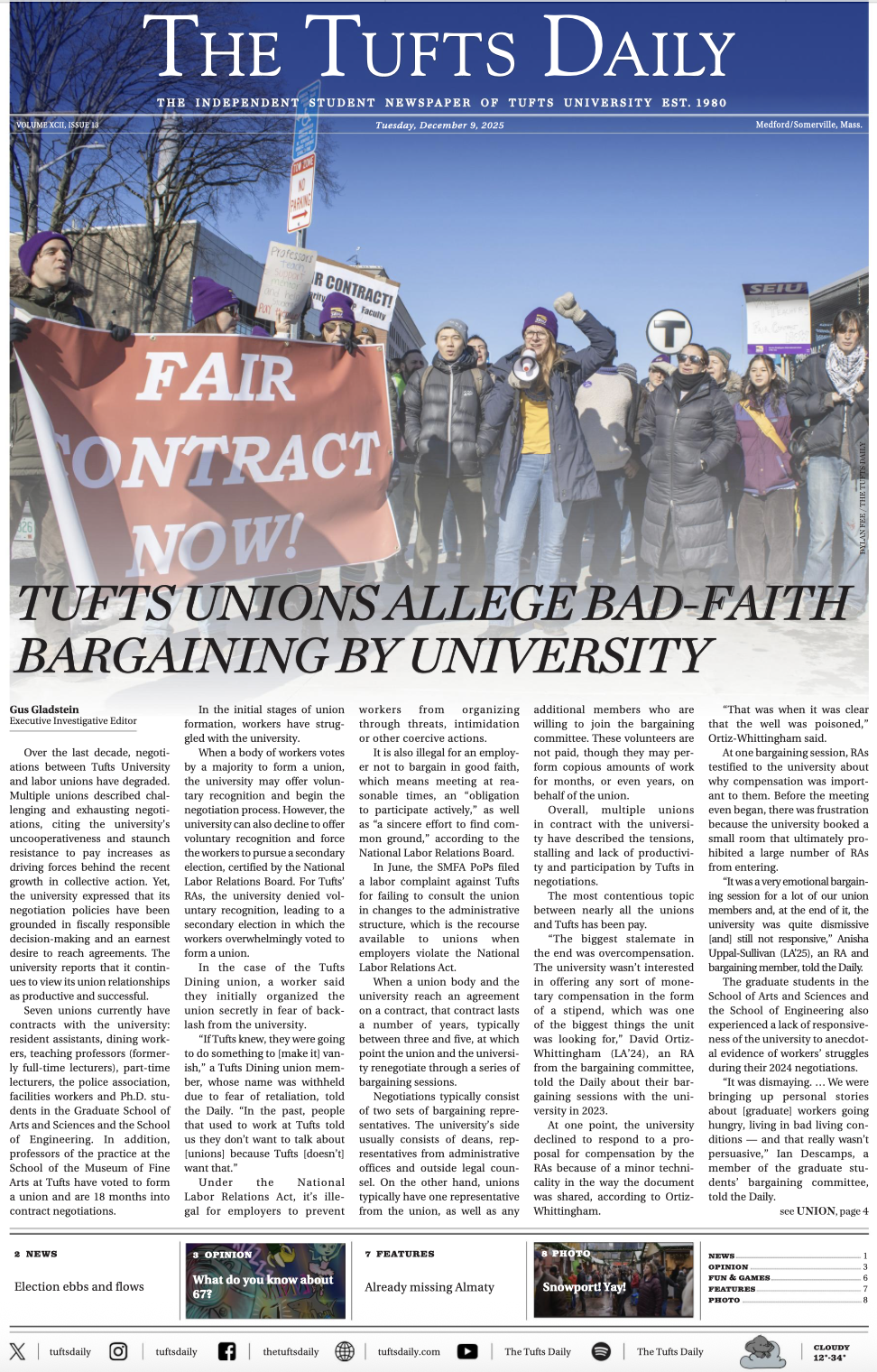Trekking uphill on a daily basis ranks among Tufts students' top complaints about life on the Hill. A new campus mobility survey seeks to not only take complaints like these into account, but to gather information on how to improve campus transportation and infrastructure.
The Department of University Space Management and Planning and a field project class at the Urban and Environmental Policy and Planning Institute (UEP) collaborated to create an interactive online map and a questionnaire that gives Tufts students, staff and faculty an opportunity to speak about the daily challenges of traveling to and around campus. This new tool seeks to gather feedback for master planning and help make recommendations for safer and more sustainable campus transportation.
The campus mobility survey, developed by Sasaki Associates, asks participants to use several icons to identify their vehicle or bike parking spots, favorite open spaces and destinations on campus, as well as problem areas. In addition to marking their primary routes, participants may trace routes they wish they could take and add general comments.
According to Director of University Space Management and Planning Lois Stanley, the idea of using a modern tool to document patterns and challenges to campus mobility was conceived last fall.
"We saw that Babson [College] and Harvard's Kennedy School were using this neat tool to learn how the university community gets around campus," she said. "The creators from Sasaki Associates showed us how Tufts can use it for master planning."
While they initiated discussions with Sasaki, Stanley's team was reading reports about a significant number of transportation accidents around campus.
"With six accidents recorded only in the first month of the academic year, we became convinced that we should use this graphic to learn what locations are easy to traverse and what are more difficult," she said.
Around the same time, Stanley became aware that the UEP would be doing a field project in the spring and saw it as an opportunity to include students in the plan.
Together with UEP Lecturer Robert Russell, she wrote a project assignment entitled "Transportation Planning for a Safer and Greener Campus."
"We asked students to document existing transportation infrastructure and essentially act as consultants to Tufts Planning about how to make the campus safer and greener in terms of mobility," Stanley said.
Rather than the traditional formation of a committee to gather results, the Sasaki campus mobility survey became their primary method for collecting data used in the study.
"Since we're working with an entire campus, it could be hard to get an answer to such broad questions," Stanley said. "This tool is a modern alternative to the focus group approach and more tailored towards students."
The members of the field project team echoed Stanley's appreciation for the tool's scale and reach.
"There are only that many ideas that our small group could come up with on our own," first−year graduate student Laura Smead said. "But this survey is an opportunity for the whole community to share how they [get around] campus and express what's missing from the Tufts landscape."
After participants were offered one of three Nook Colors, the online survey received more than 500 responses by the end of last week, 57 percent of which came from students, Stanley said.
After the survey officially closes, the field project team will analyze the data. Then, they plan to study the experiences of other colleges with similar transportation challenges.
"We will look at examples of best practices in other campus transportation plans, particularly campuses with similar topography," first−year graduate student Emily Mailloux said.
The project requires the team to recommend both short−term and long−term improvements to campus infrastructure, focusing on improvements that could feasibly be implemented by Tufts rather than by the Medford and Somerville city governments.
According to the UEP students, this project is particularly valuable because it was created by a group of students who are concerned about their colleagues' safety.
"This is the time for the students to say what they want from their campus and we will do our best to incorporate their responses into the final proposal, which will be presented on April 18," first−year graduate student Natalia Collarte said.
Tufts Bikes, the campus bike−sharing program, is one student organization that has expressed interest in the survey's results. Part of Tufts Bikes' mission is to make the campus more bike−friendly and to ensure the safety of bikers in the local community.
According to Tufts Bikes President Neil Aronson, a sophomore, the survey's results will help the group develop ideas for future projects.
"We can use this [survey] to lobby the administration for changes that would be beneficial to the biking community," he said.
Aronson identified the lack of bike lanes or designated bike pathways as a challenge to biking around the Tufts campus.
If bike accessibility were to be improved, he said, it would encourage this green form of transportation as well as make it safer.
In the future, a similar interactive tool might be used to learn more about the community's use of classrooms, according to Stanley.
"Rather than identifying the MBTA stops, we would identify classrooms on that map and get a sense of the opinions of students and faculty through questionnaire and narrative," she said.





